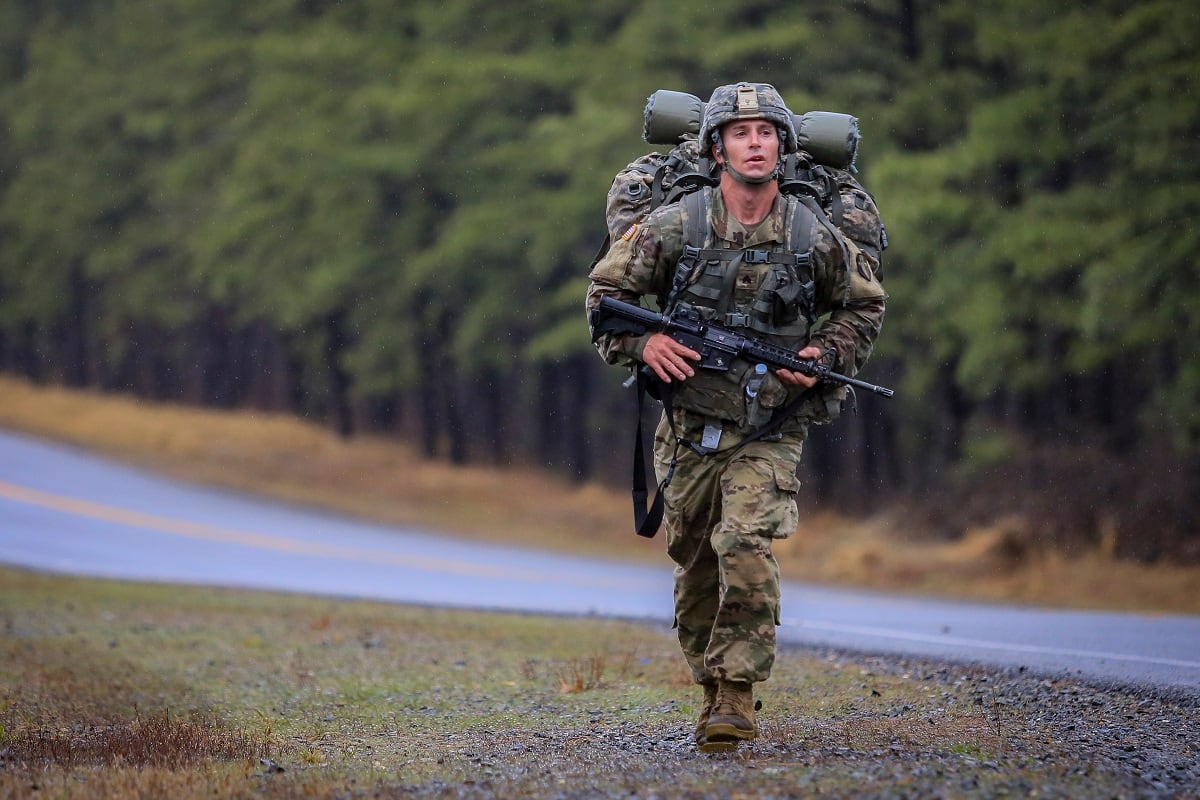Two new footwear advances could help soldiers use their own footsteps to charge devices in the field and enable commanders to track their location.
The Army recently awarded a $16.5 million contract to Robotic Research LLC for a sensor unit that fits on a boot and can be used to track individual soldier locations, even in GPS-denied environments, according to a Robotic Research statement.
Soldiers are carrying more electronic gear than ever before, and those radios, tablets, sensors and other devices need to be charged. And it’s hard to find a wall socket on the battlefield.
One novel way to get after the charging problem while still keeping soldiers on the move comes in the form of a recent patent out of the Army’s C5ISR Center, which is developing a shoe insole that can generate electricity with each step.
As the soldier’s heel pushes down into the insole, the force hits a miniature rotational level mechanism, turning a small generator, which creates an electric charge.
RELATED

“We embedded an energy-harvesting mechanism into a combat boot heel insole so that each time a soldier’s heel strikes it activates a generator, which spins to produce energy,” Nathan Sharpes, a C5ISR Center mechanical engineer who developed the patent, told techlinkcenter.org.
The developers had a previous version but it gave the foot an unnatural feel while taking each step. So, engineers went to work to make it better.
“We improved the mechanism by making each step feel more natural versus the slight sinking motion soldiers experienced when using our previous version. We also sped up the generator’s timing mechanism to produce energy for longer than the previous version, which is a positive direction to achieve harvester efficiency.”
Another engineer at the center, Julie Douglas, has also built a rucksack that converts energy created when the pack moves to an electrical charge.
Army Times reported last year that Army developers were also testing a “kinetic knee harvester” that uses the motion of a soldier’s legs to build electrical current as the soldier marches.
The backpack frame kinetic harvesters are more efficient when soldiers are going uphill, Noel Soto a systems engineer with the Army’s Research, Development and Engineering Command told Army Times in 2018, as that’s when their rucksacks move the most.
Soldiers are trained to fasten everything down. But a loose-fitting rucksack creates more movement, resulting in more energy-harvesting efficiency, Soto said. For that reason, soldiers preferred the kinetic knee harvesters.
The knee harvest mechanism also helps soldiers brake better when going downhill, so they have a better-controlled descent, which can decrease fatigue, Soto said.
And they provide similar power output — 6 watts uphill and 30 watts downhill, as compared 8 to 40 watts, depending on wobble.
Army researchers have also been experimenting with wearable, flexible solar panels that can scoop up the sun’s rays to charge devices when weather permits.
Todd South has written about crime, courts, government and the military for multiple publications since 2004 and was named a 2014 Pulitzer finalist for a co-written project on witness intimidation. Todd is a Marine veteran of the Iraq War.




